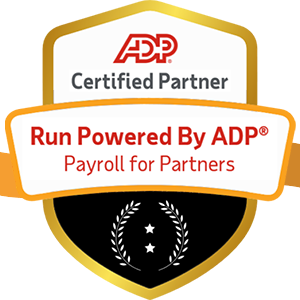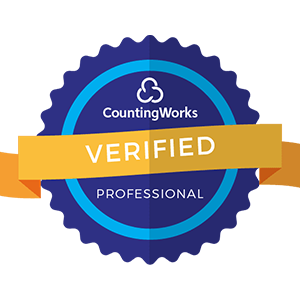
In today's rapidly evolving business landscape, organizations face a myriad of challenges that can disrupt their workforce and operations. From technological advancements to economic uncertainties, the ability to anticipate and prepare for potential disruptions has become a crucial skill for business leaders.
Scenario planning, a strategic tool that helps organizations envision and plan for multiple possible futures, has emerged as a powerful approach to navigating workforce disruptions. In this article, we'll explore the importance of scenario planning, its key elements, and how organizations can effectively implement it to build resilience and adaptability in the face of unexpected changes.

In an era characterized by rapid change and uncertainty, traditional workforce planning methods often fall short. Linear projections based on historical data may not account for the complex interplay of factors that shape the future of work. Scenario planning offers a more dynamic and flexible approach, enabling organizations to:
Identify Potential Disruptors: By systematically exploring a range of possible futures, scenario planning helps organizations identify potential disruptors that could impact their workforce, such as technological advancements, shifting consumer preferences, or regulatory changes.
Assess the Impact of Disruptions: Scenario planning allows organizations to analyze the potential consequences of different disruptions on their workforce, including changes in skill requirements, job roles, and organizational structures.
Develop Contingency Plans: By envisioning multiple plausible scenarios, organizations can develop contingency plans and strategies to mitigate risks and capitalize on opportunities that may arise in different future contexts.
Foster Adaptability and Resilience: Engaging in scenario planning cultivates a mindset of adaptability and resilience among business leaders and employees, enabling them to respond effectively to unexpected challenges and changes.
To effectively implement scenario planning for workforce disruption, organizations should consider the following key elements:
To successfully implement scenario planning for workforce disruption, organizations should follow these strategic steps:
Secure Leadership Buy-In: Engage senior leaders in the scenario planning process and communicate the value of this approach in building organizational resilience and adaptability.
Assemble a Diverse Team: Bring together a cross-functional team with diverse perspectives and expertise to ensure a comprehensive exploration of potential futures.
Allocate Resources: Dedicate sufficient time, budget, and resources to support the scenario planning process, including research, workshops, and communication efforts.
Engage Stakeholders: Involve key stakeholders, such as HR professionals, business unit leaders, and employee representatives, in the scenario planning process to gather insights and build ownership.
Communicate and Educate: Share the scenarios and their implications with the wider organization to foster a shared understanding of potential futures and the need for adaptability.
Integrate with Strategic Planning: Incorporate the insights from scenario planning into the organization's overall strategic planning process to ensure alignment and coherence.
Monitor and Adapt: Continuously monitor the external environment and update scenarios as needed to maintain their relevance and effectiveness.
In addition to scenario planning, organizations can leverage mental models to navigate workforce disruptions more effectively. Mental models are simplified representations of complex realities that help individuals make sense of the world and guide their decision-making.
The VUCA Framework: This model, which stands for Volatility, Uncertainty, Complexity, and Ambiguity, helps organizations recognize and respond to the challenges of a rapidly changing environment.
The PESTEL Analysis: This framework examines the Political, Economic, Social, Technological, Environmental, and Legal factors that shape the external environment and their potential impact on the workforce.
The Jobs-to-be-Done Theory: This model focuses on understanding the underlying needs and motivations of employees and customers, helping organizations design workforce strategies that align with these needs.
By combining scenario planning with relevant mental models, organizations can develop a more comprehensive and nuanced understanding of potential workforce disruptions and devise effective strategies to navigate them.
To further stimulate thinking and discussion around workforce disruption and scenario planning, consider these powerful frameworks and insights:
"The future belongs to those who prepare for it today."
— Malcolm X
This quote emphasizes the importance of proactive planning and readiness in the face of an uncertain future.
"The illiterate of the 21st century will not be those who cannot read and write, but those who cannot learn, unlearn, and relearn."
— Alvin Toffler
This statement highlights the critical role of continuous learning and adaptability in navigating the rapidly changing workforce landscape.

The "What If?" Framework: Encourage teams to ask bold, provocative questions that challenge conventional thinking and spark creativity in scenario development (e.g., "What if 50% of our workforce becomes remote?").
The "Zoom In, Zoom Out" Approach: Alternate between focusing on specific details and taking a broad, systemic view when analyzing potential workforce disruptions to ensure a comprehensive understanding of their implications.
By incorporating these thought-provoking statements and frameworks into the scenario planning process, organizations can stimulate innovative thinking and develop more robust strategies for navigating workforce disruptions.
In an increasingly complex and uncertain business environment, scenario planning has emerged as a vital tool for organizations seeking to build resilience and adaptability in the face of workforce disruptions. By systematically exploring multiple plausible futures, assessing their implications, and developing robust strategies and contingency plans, organizations can better navigate the challenges and opportunities presented by a rapidly changing world of work.
To effectively implement scenario planning, organizations must secure leadership buy-in, assemble diverse teams, engage stakeholders, and integrate insights into their strategic planning processes. By combining scenario planning with relevant mental models and thought-provoking frameworks, organizations can cultivate a culture of continuous learning, innovation, and adaptability.
The bottom line: As the future of work continues to evolve, embracing scenario planning as a core component of workforce management will be essential for organizations seeking to stay ahead of the curve and build sustainable success in an uncertain world. The question isn't whether disruption will come—it's whether you'll be ready when it does.


